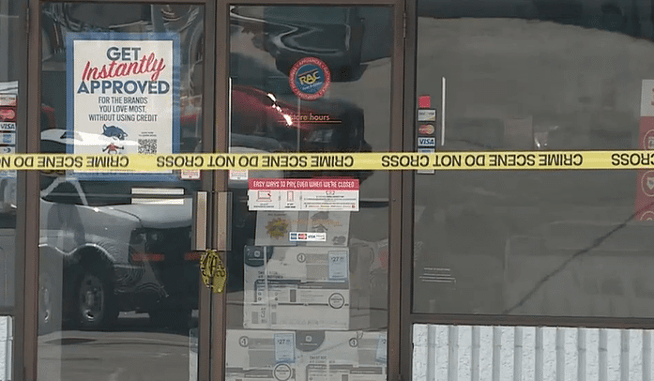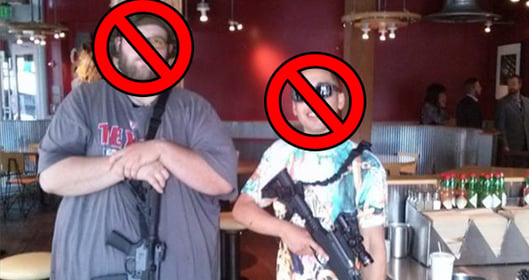This article was submitted by Jordan Burke, who is a Police Officer and Head Instructor at Radix Tactical. You can learn more about Radix Tactical at www.RadixTactical.com
Owning a gun can give you a false sense of security that is, frankly, dangerous. In fact this false sense of security could cost you your life.
Why would a police officer, who believes in the 2nd Amendment and that most law abiding citizens should be armed, make such a statement?
The reason stems from my weekly experience at my local indoor firing range. Given the typical array of guns and gear, the average clientele of the range caters to middle to upper middle income folks. So, these are reasonably intelligent people with good equipment. The problem is, many of them are dangerous with their firearms and after watching thousands of rounds fired over the years, I am convinced that most could not use their firearms to save their lives or the lives of their loved ones during a violent attack.
Why do I say this? Well, if standing still, you can’t hit a stationary paper target kill-zone at least 75% of the time, there is little chance you are going to hit something that is moving while under stress. The overwhelming majority of range targets I see are peppered across the entire paper boundary with little if no pattern in essential areas, demonstrating little if any ability to be precise even while standing stationary in a completely controlled and safe environment.
100% of violent encounters create extremely high stress. The vast majority of these encounters are not stationary and the targets always shoot back. In fact, violent offenders usually make the first move putting the victim at a significant disadvantage both psychologically and emotionally. The good news is that there is at least a partial remedy to dealing with stress situations effectively.
Lets assume you practice using your weapon regularly, when should you begin to feel like you can handle a tough situation?

The photo above is a target from range training today with one of my students. They were using the smallest Glock made, a model 42, chambered in .380 caliber. Most of their magazines had a plus-two extension providing them with nine rounds with one in the chamber. Most notable is that these guns are very small and thus far more difficult to shoot accurately than a full size weapon.
The first photo reveals the results of 100 rounds of fire with movement under stress. The stress induced in this exercise was the requirement of movement before each shot. Each shot had to be taken within either three or five second intervals, magazine changes were required without allowance for extra time between shots, and vocal commands to hit the various areas on the target were random.
The target areas were head, chest/center mass, hips (requiring a specific rapid fire sequence), and four 3” precision targets outside of the body. The distance was within the range that most gun related self-defense scenarios take pace based on FBI statistics. Here’s what you should notice:
- 100% of their kill-zone shots were on target and would have resulted in disabling the attacker.
- 100% of their precision shots were on target. This means that they would likely be able to make difficult shots, as with a hostage situation, under stress.

The photo above reveals the same target after about 250 rounds. In a second exercise I had the student focus on trigger reset for repeat fire requirements and magazine changes while moving. I also had them speed up their center-mass shots and their shots to the hips. Here’s what you should notice:
- Just short of 100% of their kill-zone shots were on target and would have resulted in disabling the attacker. One center mass miss would have destroyed the attacker’s collar bone. The other miss (lower right) would have passed through without any organ damage.
- Just one short of 100% of their precision shots were on target. This means that they would likely be able to make difficult shots, as with a hostage situation, under stress. Even the one miss would have been in the kill-zone of a hostage taker.
Now, you might wonder how much training and practice was required for this level of accuracy. This student has been seriously engaged with Cognitive Combat Shooting™ for a little more than one year. They are a very busy business executive with a mostly sedentary job. They exercise daily at home but are not any more than average athletically.
The bottom line? This level of shooting proficiency can be achieved by almost anyone in a relatively short period of time and is really the beginning of someone who is able to safely use a gun in high-stress self-defense scenario. They still have a lot more to learn with respect to drawing and shooting from concealment, moving while shooting, target selection while under high stress, etc. But, they are, at this point, responsible and safe gun owners who have good reason to be confident in their abilities.
Be prepared, stay vigilant, and remember that you are your first line of defense.
 Jordan Burke is a Police Officer and Head Instructor at Radix Tactical. You can learn more about Radix Tactical at www.RadixTactical.com
Jordan Burke is a Police Officer and Head Instructor at Radix Tactical. You can learn more about Radix Tactical at www.RadixTactical.com














